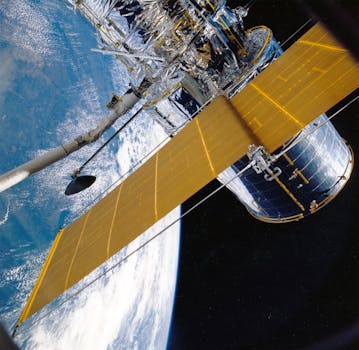Unlocking the Power of LEO Satellites: Revolutionizing Global Connectivity

Introduction to LEO Satellites
LEO satellites, or Low Earth Orbit satellites, are artificial satellites that orbit the Earth at an altitude of around 160 to 2,000 kilometers. The Focus Keyword LEO satellites have been gaining significant attention in recent years due to their potential to provide global connectivity and transform various industries. In this article, we will delve into the world of LEO satellites, exploring their history, benefits, applications, and future prospects.
History and Development of LEO Satellites

The concept of LEO satellites dates back to the 1960s, when the first artificial satellites were launched into space. However, it wasn’t until the 1990s that LEO satellites began to gain popularity, with the launch of the first commercial LEO satellite constellation, Iridium. Since then, numerous companies have launched their own LEO satellite constellations, including Globalstar, O3b, and OneWeb.
Benefits and Applications of LEO Satellites

LEO satellites offer several benefits over traditional geostationary satellites, including lower latency, higher bandwidth, and improved connectivity. These benefits make LEO satellites ideal for various applications, such as global connectivity, IoT, earth observation, and navigation. LEO satellites are also being used to provide internet access to remote and underserved communities, bridging the digital divide and promoting economic growth.
Future Prospects and Challenges

As the demand for global connectivity and satellite technology continues to grow, the future of LEO satellites looks promising. However, there are also several challenges that need to be addressed, such as regulatory frameworks, space debris, and interference. Despite these challenges, companies like SpaceX, Amazon, and Google are investing heavily in LEO satellite technology, with plans to launch thousands of satellites in the coming years.
See more:

